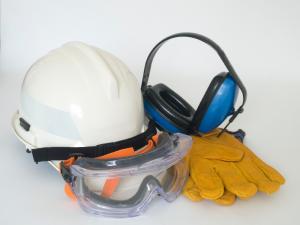
Top Safety Tips to Follow on Construction Sites
Posted on February 13, 2014
 Courtley (Health & Safety) Ltd has been providing health and safety support to organizations of all sizes for close to two decades now. During this time, we have noted that a large percentage of the accidents occurring on construction sites could have been easily prevented by using good old common sense.
Courtley (Health & Safety) Ltd has been providing health and safety support to organizations of all sizes for close to two decades now. During this time, we have noted that a large percentage of the accidents occurring on construction sites could have been easily prevented by using good old common sense.
Here is a list of helpful tips that will help you to make your site a safer environment for all employees.
Proper training and Protective equipment.
It is absolutely essential that your employees have been trained to follow the latest safety rules and regulations as well as having all the necessary personal protection equipment to ensure their safety. Our Members have access to free training sessions on topical issues like Asbestos Awareness, Manual Handling, Harness Safety, Portable Appliance Testing
Working at height
The most common injuries on site in the UK are caused by falls from height. More often than not they are falls from ladders and scaffolding, which can cause significant damage; such as fractures, broken bones, back injuries and in some cases head trauma.
The first element to safely working at height is to reduce the height wherever possible; make the place of work as safe as practicable and determine which elements of the job can be completed on the ground.
Ensure the area of work at height is safe with permanent or temporary guard rails, if the use of a scissor lift is more secure or a tower scaffold.
Falling objects
Working at height brings other dangers to co-workers workers on a construction site from falling objects. You must make sure that objects such as tools and masonry cant fall outside the construction sites boundaries. On scaffolding this can be achieved by using brick guards, nets and to-boards.
Slips and Trips
Just as in any other situation slips and trips are very common. On a building site that can also be very dangerous. Make sure your construction site is kept clean and in an orderly fashion. Introduce a sense of responsibility into your workforce, if anyone sees a hazard then they should feel compelled to fix it or report it.
Here are our top safety tips to follow on construction sites:
- Changes in levels such as doorways
- Obstacles such as tools, building materials or waste
- Trailing cables
- Wet or slippery surfaces
- Uneven surfaces
Defective equipment
Defective equipment can cause accidents, make sure you regularly check all equipment for any defect. If you find a problem with any of the equipment on your site it should immediately be reported.
If you believe the equipment is defective by design then you can report this under the European product safety laws.
Vehicle Accidents
Constructions site often utilise heavy machinery and vehicles, with these tools comes a responsibility and risk. Accidents often happen when a vehicle is reversing so its essential that the driver has good all round visibility via windows, mirrors and if required CCTV.
Vehicles should also be fitted with appropriate warning devices such as rotating lights and sirens as well and guards on dangerous parts.
Hazardous materials
Clearly mark all the hazardous materials at the construction site.
Any potentially hazardous material should be clearly marked and located at a safe location. A material handling instructions and precautions sheet should be posted close by in an easy to spot location.
There will always be inherent danger at a construction site. However, following correct protocol and putting the proper processes in place will help you minimise that danger as well as equip your workforce to deal with any situations that may arise.
